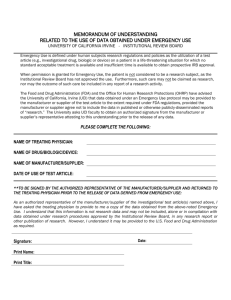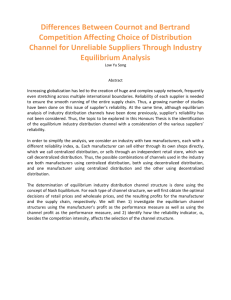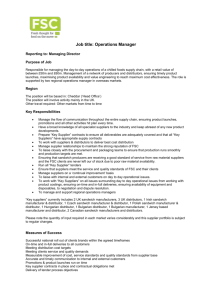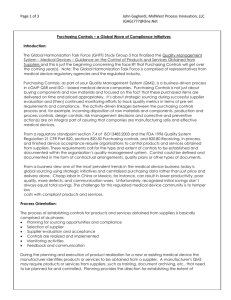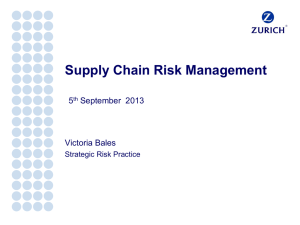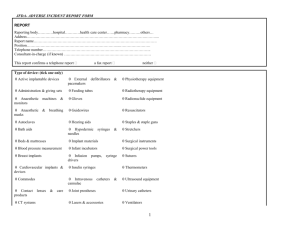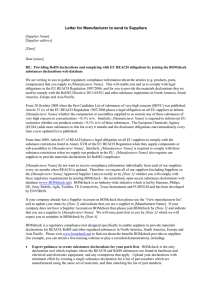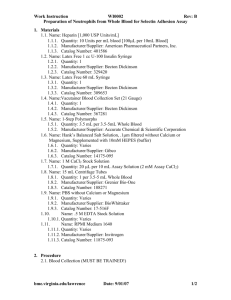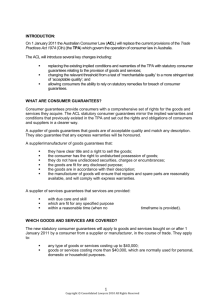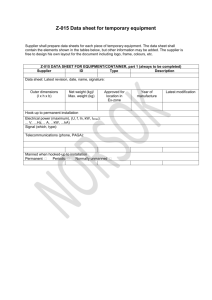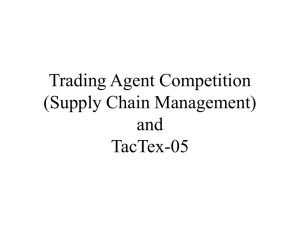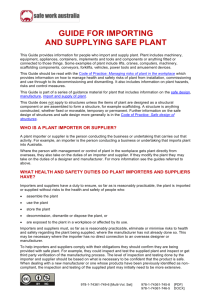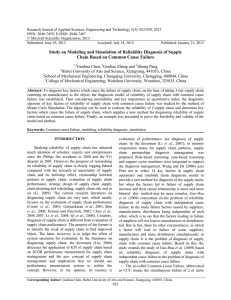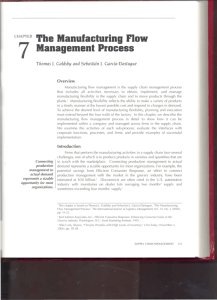Manufacturing has a negative impact on the environment in different
advertisement
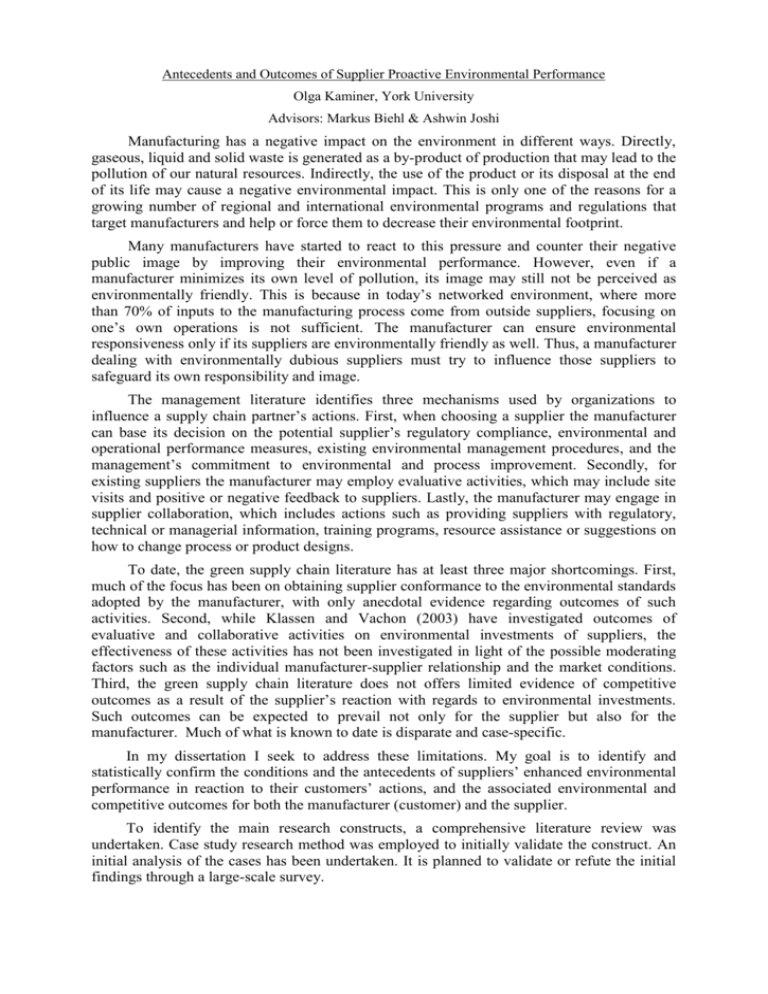
Antecedents and Outcomes of Supplier Proactive Environmental Performance Olga Kaminer, York University Advisors: Markus Biehl & Ashwin Joshi Manufacturing has a negative impact on the environment in different ways. Directly, gaseous, liquid and solid waste is generated as a by-product of production that may lead to the pollution of our natural resources. Indirectly, the use of the product or its disposal at the end of its life may cause a negative environmental impact. This is only one of the reasons for a growing number of regional and international environmental programs and regulations that target manufacturers and help or force them to decrease their environmental footprint. Many manufacturers have started to react to this pressure and counter their negative public image by improving their environmental performance. However, even if a manufacturer minimizes its own level of pollution, its image may still not be perceived as environmentally friendly. This is because in today’s networked environment, where more than 70% of inputs to the manufacturing process come from outside suppliers, focusing on one’s own operations is not sufficient. The manufacturer can ensure environmental responsiveness only if its suppliers are environmentally friendly as well. Thus, a manufacturer dealing with environmentally dubious suppliers must try to influence those suppliers to safeguard its own responsibility and image. The management literature identifies three mechanisms used by organizations to influence a supply chain partner’s actions. First, when choosing a supplier the manufacturer can base its decision on the potential supplier’s regulatory compliance, environmental and operational performance measures, existing environmental management procedures, and the management’s commitment to environmental and process improvement. Secondly, for existing suppliers the manufacturer may employ evaluative activities, which may include site visits and positive or negative feedback to suppliers. Lastly, the manufacturer may engage in supplier collaboration, which includes actions such as providing suppliers with regulatory, technical or managerial information, training programs, resource assistance or suggestions on how to change process or product designs. To date, the green supply chain literature has at least three major shortcomings. First, much of the focus has been on obtaining supplier conformance to the environmental standards adopted by the manufacturer, with only anecdotal evidence regarding outcomes of such activities. Second, while Klassen and Vachon (2003) have investigated outcomes of evaluative and collaborative activities on environmental investments of suppliers, the effectiveness of these activities has not been investigated in light of the possible moderating factors such as the individual manufacturer-supplier relationship and the market conditions. Third, the green supply chain literature does not offers limited evidence of competitive outcomes as a result of the supplier’s reaction with regards to environmental investments. Such outcomes can be expected to prevail not only for the supplier but also for the manufacturer. Much of what is known to date is disparate and case-specific. In my dissertation I seek to address these limitations. My goal is to identify and statistically confirm the conditions and the antecedents of suppliers’ enhanced environmental performance in reaction to their customers’ actions, and the associated environmental and competitive outcomes for both the manufacturer (customer) and the supplier. To identify the main research constructs, a comprehensive literature review was undertaken. Case study research method was employed to initially validate the construct. An initial analysis of the cases has been undertaken. It is planned to validate or refute the initial findings through a large-scale survey.
